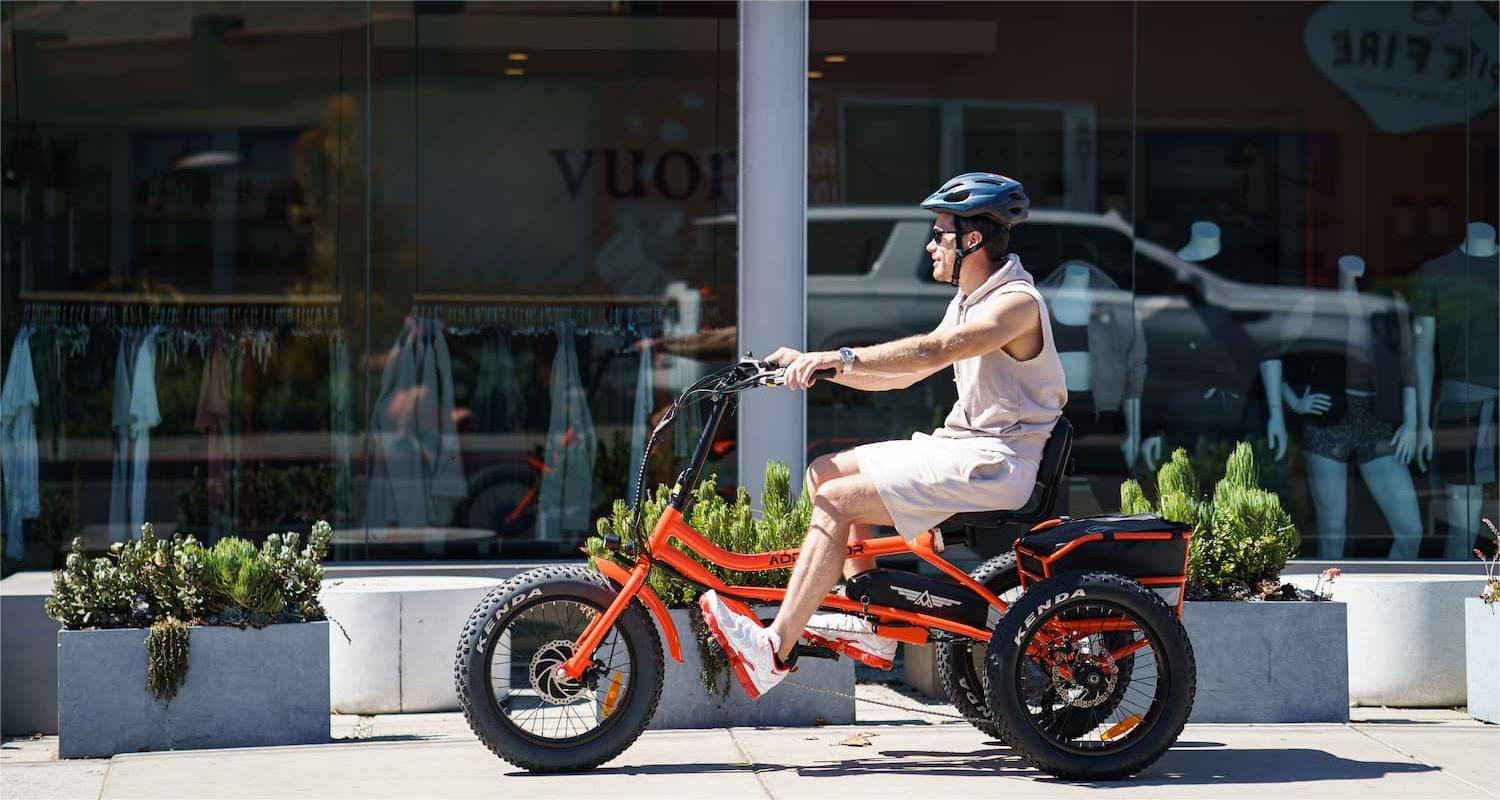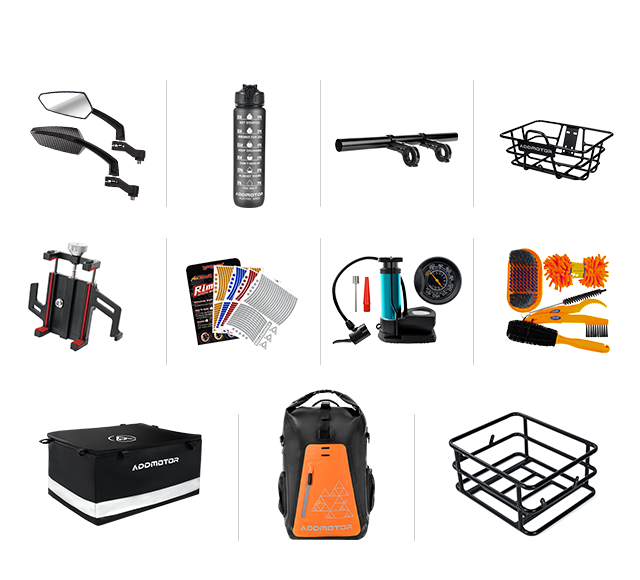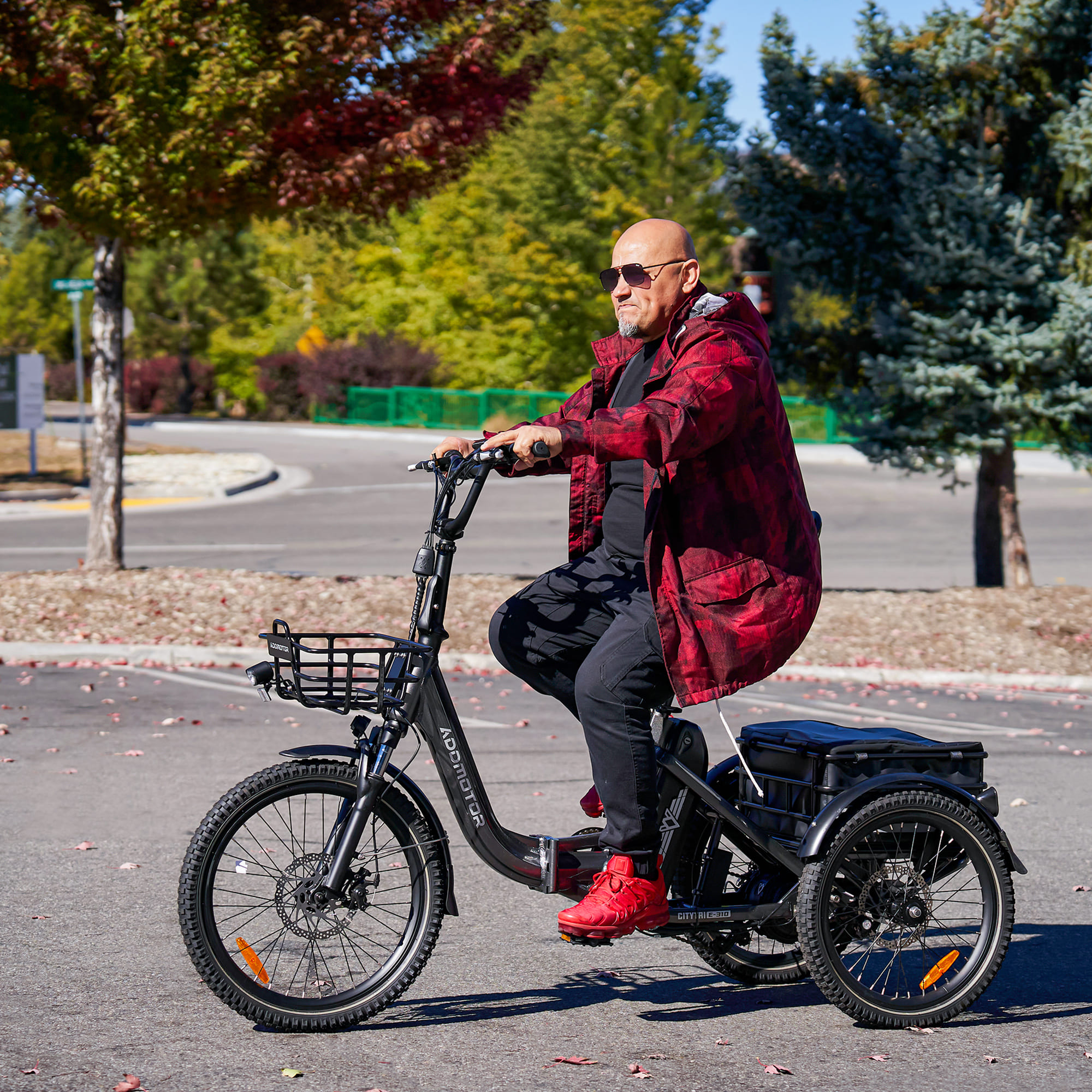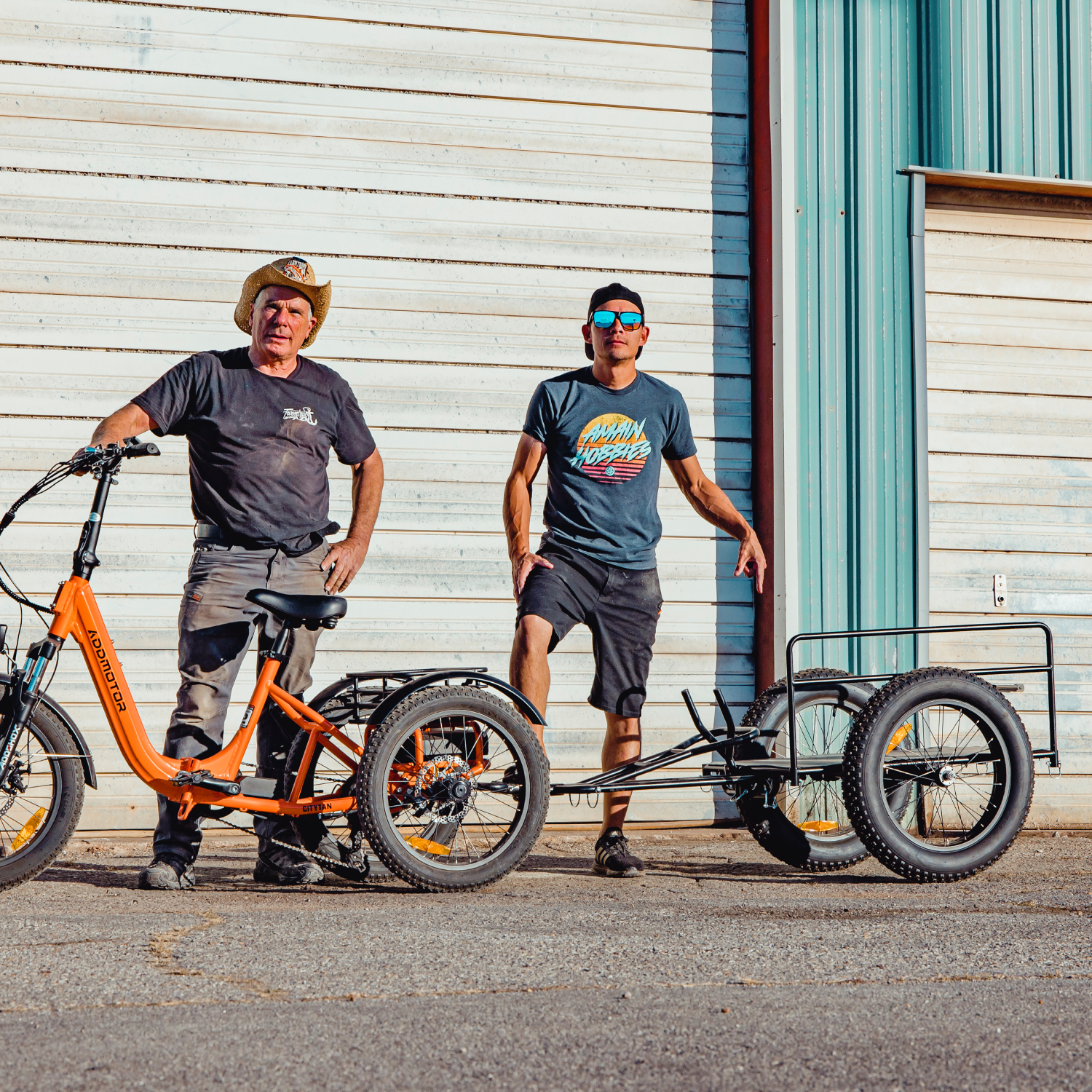What is the E-bike Law in Your State?
As the world becomes more environmentally conscious, alternative modes of transportation are gaining popularity. One such mode is the electric bike, which offers a sustainable and cost-effective way to commute or explore. However, as e-bikes become more prevalent on roads and bike paths, questions arise about their safety and the regulations that govern their use.
In this article, we will explore one of the most critical aspects of e-bike regulation: speed limits and motor power size. From legal definitions to state-specific laws and safety considerations, we will provide a comprehensive guide to e-bike speed limits in the United States. By the end of this article, you will have a better understanding of the rules and guidelines that apply to e-bike riders, helping you stay safe and compliant while enjoying the benefits of this innovative mode of transportation.
 Addmotor electric trikes for sale, with 750W hub motor, are set to a max speed of 20 mph, ensuring your every safe ride.
Addmotor electric trikes for sale, with 750W hub motor, are set to a max speed of 20 mph, ensuring your every safe ride.
Max. Speed Limit - 20 Mph
In the United States, electric bikes are legally defined as bicycles with a motor of less than 750 watts, and they are not subject to the same regulations as motor vehicles. According to U.S. Code Title 15, Chapter 47, Section 2085(d), e-bikes are limited to a maximum speed of 20 miles per hour when the motor is being used. This means that riders should not expect to travel faster than 20 mph on level ground when using the motor.
It is important to note that exceeding the speed limit for e-bikes can have legal and safety consequences. In some cases, riding an e-bike at high speeds may be considered reckless or negligent, and could result in fines or other penalties. Additionally, riding an e-bike at high speeds increases the risk of accidents and injuries.
Pedal Requirements
Pedal requirements for e-bikes vary depending on the type of e-bike and the state in which it's being ridden. Generally speaking, e-bikes are equipped with pedals that can be used to propel the bike forward, either on their own or in conjunction with the electric motor. However, different types of e-bikes have varying levels of pedal assist or throttle control.
Pedal-assist e-bikes require the rider to pedal to activate the electric motor. The motor will provide additional power to the pedals as the rider pedals, making it easier to climb hills or ride long distances. In contrast, throttle-controlled e-bikes allow the rider to activate the motor using a hand-operated throttle, without the need to pedal at all.
It's important to note that some states may have restrictions on the use of throttle-controlled e-bikes, and may require that all e-bikes be equipped with a pedal-assist system. Additionally, some states may require that e-bike motors only provide assistance up to a certain speed, such as 20 mph, and that the motor automatically disengages once the bike reaches that speed.
Motor Power Limit
Another consideration when it comes to e-bikes is the motor power size. As mentioned earlier, e-bikes are limited to a motor size of 750 watts or less. This limit ensures that e-bikes remain classified as bicycles and are not subject to the same regulations as motor vehicles.
It is important to ensure that any e-bike you purchase complies with federal and state regulations regarding motor power size. Additionally, it's important to choose an e-bike with a motor that is appropriate for your needs and skill level. E-bikes with more powerful motors may be more suited to experienced riders or those who need to travel long distances, while e-bikes with less powerful motors may be better suited to beginners or those who only need to travel short distances.
Helmet Laws
In addition to speed limits and motor power size, helmet laws also vary from state to state in the United States. According to nolo.com, there are some states that require e-bike riders to wear a helmet. The table below shows a breakdown of helmet laws by state:
|
State |
Helmet Required for E-Bicyclist? |
State |
Helmet Required for E-Bicyclist? |
|
Alabama |
Yes |
Missouri |
No |
|
Alaska |
No |
Montana |
No |
|
Arizona |
No |
Nebraska |
No |
|
Arkansas |
Under 21 only |
Nevada |
No |
|
California |
Yes - all riders of "type 3" e-bikes and under 18 only for other e-bikes |
New Hampshire |
Under 18 only |
|
Colorado |
Under 18 only |
New Jersey |
Under 17 only |
|
Connecticut |
Under 16 only |
New Mexico |
No |
|
Delaware |
Under 18 only |
New York |
Yes |
|
District of Columbia |
Yes |
North Carolina |
No |
|
Florida |
Under 16 only |
North Dakota |
No |
|
Georgia |
Yes |
Ohio |
Under 18 only |
|
Hawaii |
Under 16 only |
Oklahoma |
No |
|
Idaho |
No |
Oregon |
Under 16 only |
|
Illinois |
No |
Pennsylvania |
No |
|
Indiana |
Under 18 only |
Rhode Island |
Under 16 only |
|
Iowa |
No |
South Carolina |
No |
|
Kansas |
Under 18 only |
South Dakota |
No |
|
Kentucky |
Under 21 only |
Tennessee |
Yes |
|
Louisiana |
Yes |
Texas |
No |
|
Maine |
Under 16 only |
Utah |
Under 21 only |
|
Maryland |
Yes |
Vermont |
No |
|
Massachusetts |
Yes |
Virginia |
Yes |
|
Michigan |
Under 18 only |
Washington |
No |
|
Minnesota |
No |
West Virginia |
Yes |
|
Mississippi |
No |
Wisconsin |
No |
|
|
|
Wyoming |
No |
In addition to the legal requirements for helmets, there are other factors to consider when choosing the right headgear for e-bike riding. For example, some riders may prefer helmets with built-in lights or reflective materials for increased visibility, particularly if they plan to ride in low-light conditions. Others may opt for helmets with additional padding or ventilation for increased comfort during longer rides.
Whatever your preferences, it's essential to choose a helmet that fits properly and provides adequate protection. Remember, helmets can be the difference between a minor injury and a life-threatening accident, so it is always better to err on the side of caution when it comes to headgear.
Safe Passing Laws
Safe passing laws are traffic laws that require drivers of motor vehicles to maintain a safe distance and speed when passing cyclists on the road. These laws aim to improve the safety of cyclists by minimizing the risks of accidents caused by motorists driving too closely to cyclists.
Safe passing laws are also important to consider when riding an e-bike. Some states have specific laws in place that require drivers to give cyclists a minimum amount of space when passing. For example, in California, drivers are required to give cyclists at least 3 feet of space when passing. Other states may have different requirements, so it is important to check your state's laws before hitting the road.
Many states also require motorists to exercise caution when passing cyclists, especially when there are hazards or obstacles on the road. Some states require drivers to slow down when passing cyclists, while others prohibit drivers from passing cyclists in certain situations, such as when a cyclist is approaching an intersection.
It is important for cyclists to be aware of the safe passing laws in their state, as well as for drivers to be mindful of the laws and to give cyclists plenty of space when passing. By following these laws, motorists can help protect the safety and well-being of cyclists on the road.
Other Important Considerations
When discussing e-bikes and their speed limits, there are a few other relevant things that are important to add to the discussion:
1. Local Regulations
In addition to state regulations, it is important to be aware of any local regulations that may apply to e-bike riders. Some cities and towns may have their own rules regarding e-bike speed limits, helmet requirements, and other factors.
2. Age Requirements
Some states may have age requirements for operating e-bikes, especially those with higher maximum speeds. It is important to be aware of these age restrictions and to ensure that anyone operating an e-bike meets the minimum age requirement.
3. Insurance Requirements
While not all states require e-bike riders to have insurance, it is a good idea to consider purchasing insurance to protect yourself in the event of an accident or other incident.
4. Maintenance and Repair
E-bikes require regular maintenance and repairs, just like traditional bicycles. It is important to ensure that your e-bike is in good working order before each ride and to have it serviced by a professional if needed.
5. Riding Safety
It is important to prioritize riding safety when operating an e-bike. This involves using headgear, respecting traffic rules, and paying careful attention to your surroundings. Additionally, it is important to be aware of the limitations of your e-bike and to ride at safe speeds to avoid accidents and injuries.
Conclusion
As the world continues to embrace the possibilities of sustainable transportation, e-bikes have emerged as a dynamic and exciting option for riders of all kinds. From city streets to mountain trails, e-bikes offer a new level of freedom and flexibility, enabling riders to travel faster and farther than ever before.
However, with great power comes great responsibility, and it is important for riders to understand and abide by the laws and regulations that govern e-bike use. By following the guidelines outlined in this article and taking a proactive approach to safety, riders can enjoy all the benefits of e-bike riding while minimizing risks to themselves and others. So, whether you are commuting to work or embarking on an epic adventure, hop on your electric bicycle, enjoy the ride, and remember to ride smart and stay safe!




